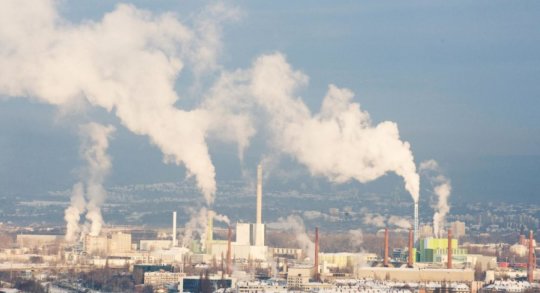[ad_1]
Air pollution, and fine dust in particular, is responsible for more than four million deaths each year. Almost 60 per cent of deaths occur as a result of cardiovascular diseases. Scientists around Professor Thomas Münzel, Director of Cardiology I at the Department of Cardiology at the Medical Center of Johannes Gutenberg University Mainz (JGU), reviewed the mechanisms responsible for vascular damage from air pollution together with scientists from the UK and the USA. Their findings have been published in the latest issue of the European Heart Journal.
The large percentage of deaths from cardiovascular disease has prompted an international group of experts from Germany, England, and the USA to analyze the negative effects of air pollution on vascular function in a review article. Key research questions focused on components of air pollution (particulate matter, ozone, nitrogen dioxide, carbon monoxide, and sulfur dioxide) that are particularly damaging to the cardiovascular system and mechanisms that damage the vessels.
“This report in the latest issue of the European Heart Journal is another important contribution from our Working Group on Environment and Cardiovascular Disease. In summary, it can be said that in relation to the vascular damaging effect of air pollution, particulate matter plays a prominent role,” commented Professor Thomas Münzel. “We are especially worried about ultrafine dust. These particles have the size of a virus. When ultrafine matter is inhaled, it immediately enters the bloodstream through the lungs, is taken up by the vessels, and causes local inflammation. Ultimately, this causes more atherosclerosis (vascular calcification) and thus leads to more cardiovascular diseases such as myocardial infarction, acute myocardial infarction, heart failure, and cardiac arrhythmias. Of particular interest is the fact that with regard to the much-discussed diesel exhaust emissions, particulate matter and not nitrogen dioxide (NO2), both of which are produced by burning diesel fuel, have a negative effect on vascular function,” Münzel continued.
Other participants in the expert group include the particulate matter researcher Professor Sanjay Rajagopalan of the UH Cleveland Medical Center, the vascular researcher and cardiologist Professor John Deanfield of the Institute of Cardiovascular Science at University College London, Professor Andreas Daiber, Head of Molecular Cardiology at the Mainz University Medical Center, and Professor Jos Lelieveld from the Max Planck Institute for Chemistry (MPIC) in Mainz.
“The fine dust particles are chemically formed mainly in the atmosphere from emissions from traffic, industry, and agriculture. In order to achieve low, harmless concentrations, emissions from all these sources need to be reduced,” commented Professor Jos Lelieveld.
“In the future, we will work intensively with the Max Planck Institute for Chemistry to investigate the causes of cardiovascular disease caused by air pollution, especially in combination with (flight) noise,” added Professor Thomas Münzel.
Story Source:
Materials provided by Johannes Gutenberg Universitaet Mainz. Note: Content may be edited for style and length.
[ad_2]















